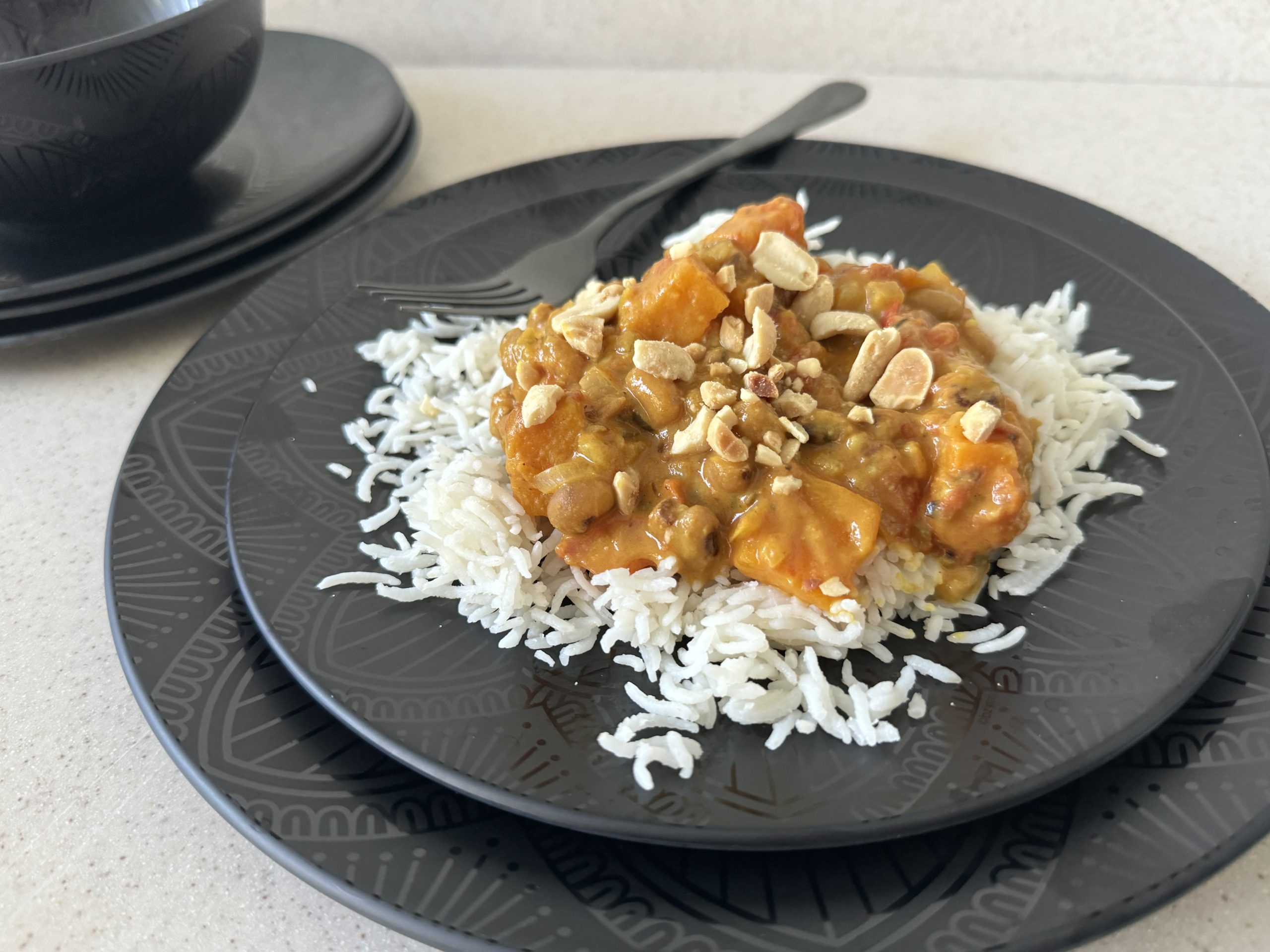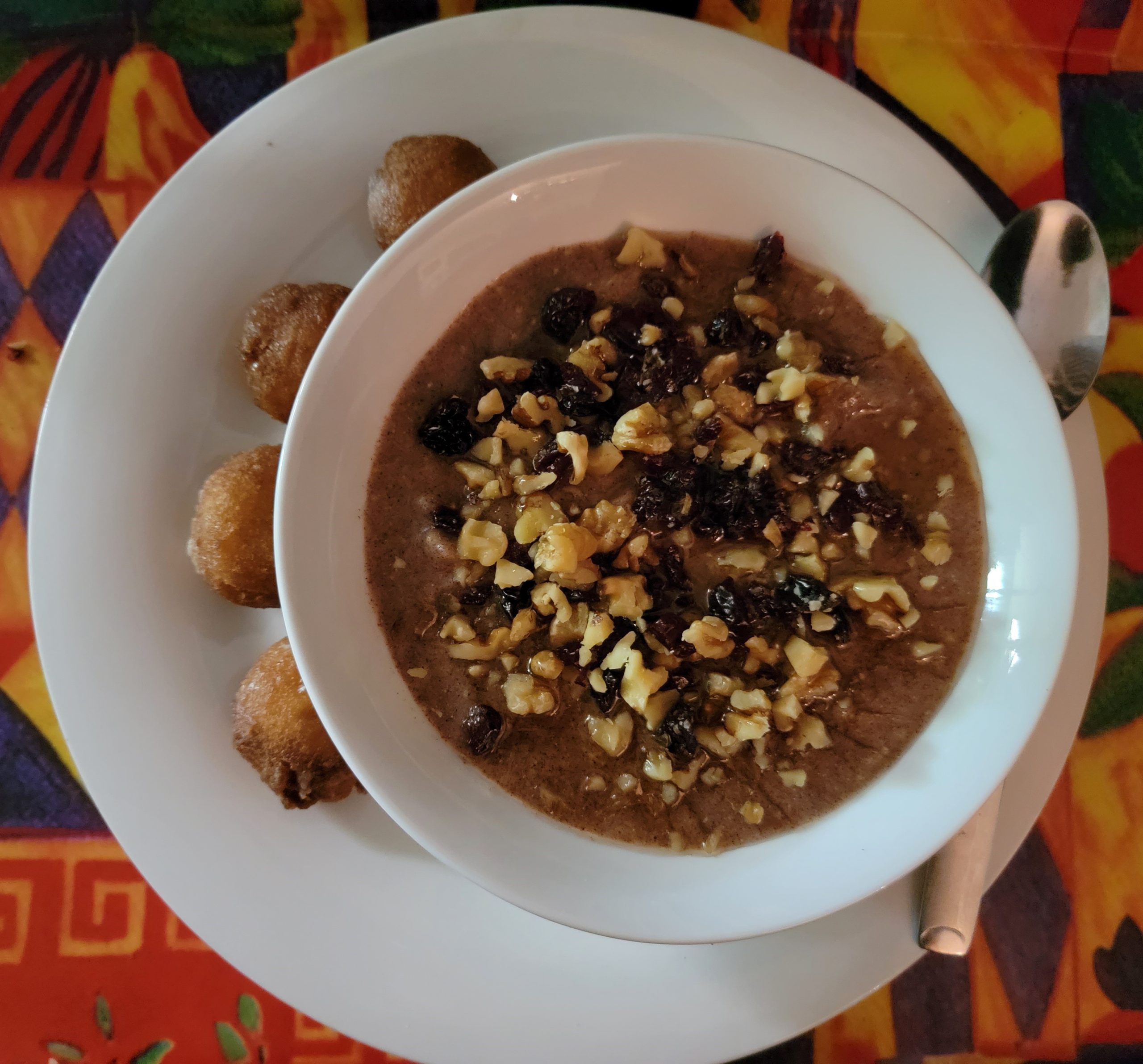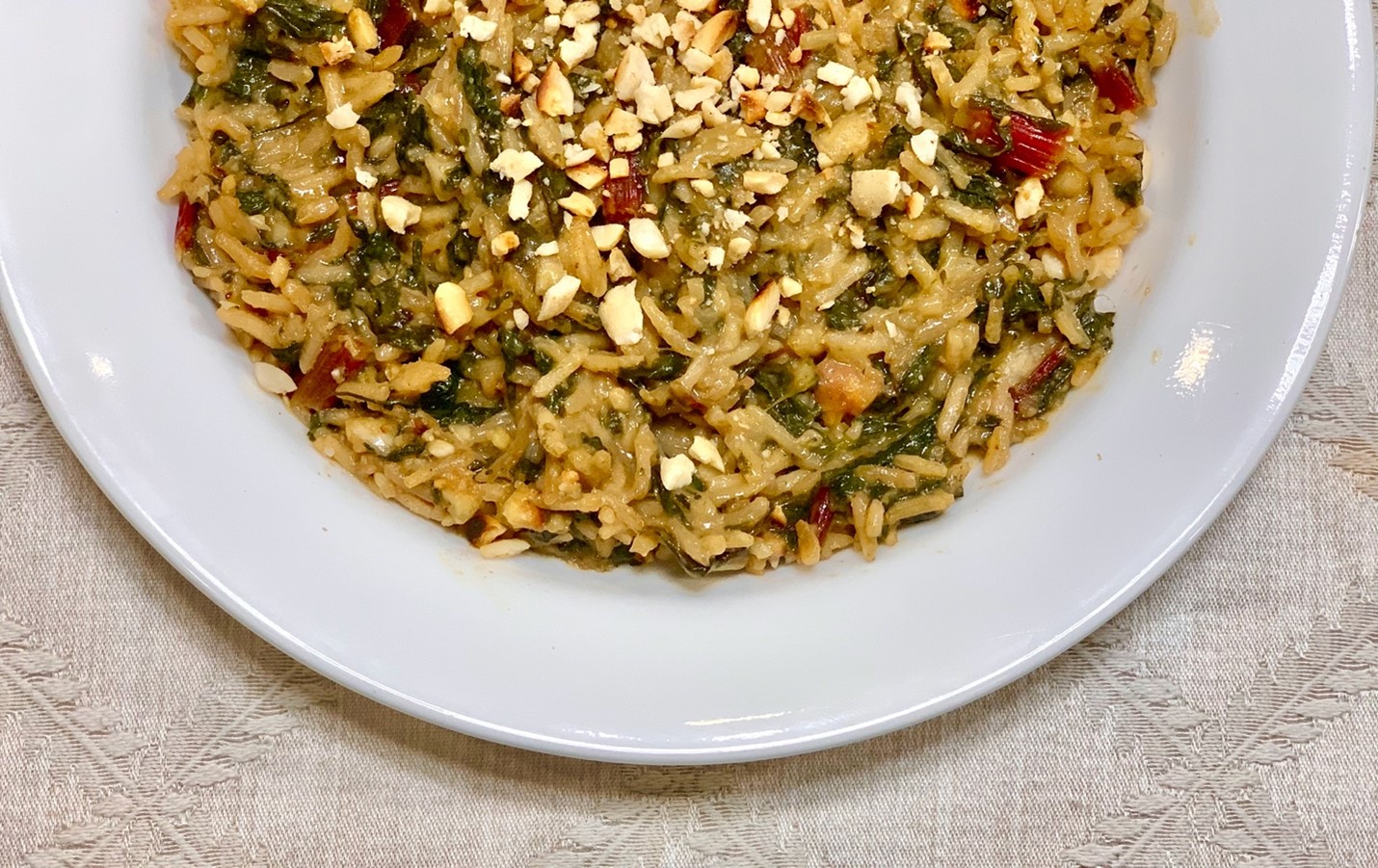
The Proven Platter – India, April 2025
This month as we honor our Featured Grantee, Asia Initiatives, and their work in India, I’m taking a little walk down memory lane to my childhood summers in India. Details

This month as we honor our Featured Grantee, Asia Initiatives, and their work in India, I’m taking a little walk down memory lane to my childhood summers in India. Details

To know the cuisine of Tanzania is to know Kachumbari. This refreshing salad is a staple side dish or condiment, found on most dining tables. While the basic ingredients include tomatoes, onions, an acid (usually lime juice), and heat (such as chili peppers or Scotch bonnets), variations abound. Some prepare it with sliced tomatoes, while others prefer a diced preparation – choose whichever suits your needs. Details

The recipe for this month, a rather cold February 2025, is in honor of our grantee, Kakenya’s Dream. The dream is to “invest in girls from rural Kenya through educational, health, and leadership initiatives to create agents of change.” The weather and the subject of our inspiration (Kenyan cuisine, girls being empowered…) seemed to conspire to prod me toward a stew of some kind, a stew that would warm your heart, lift your spirits, and fill you up. Enter: Maharage Ya Nazi, Details

For this month’s Proven Platter, we “visited” Nepal. While the country is famously known for its majestic and beloved Mt. Everest, it’s also home to a variety of uniquely bold and flavorful dishes. The beauty of Nepali cuisine lies in the combination of simple ingredients that form the foundation of many beloved dishes. Vegetarian staples like lentils, rice, corn, and potatoes are transformed with the addition of aromatic spices and condiments. Some of these ingredients may already be in your pantry, such as turmeric, coriander or chilies, while others, like fenugreek seeds, mustard oil, and ajwain seeds, may require a special trip or an online order – but trust us, it’s well worth it! Details

It’s not often that we have a candy recipe here at Together Women Rise, but this one is simple and loaded with flavor. It can be enjoyed all year, and will be a delight for everything from pool parties to holiday gatherings. Details

The traditional cuisine of Zambia is built around legumes, pulses, greens and vegetables that are indigenous to the region. Ingredients like Bambara nuts, groundnuts (peanuts), cowpeas, sesame seeds, soyabeans, wild spinach, pumpkin seeds, pumpkin, okra, and sweet potatoes are used in simple, straightforward perparations that preserve their nutritional value. Animal-based proteins are less frequently used. Of animal proteins, chicken and dried fish are the most commonly used. Details

Please join us in welcoming the two newest members of the Together Women Rise recipe curator team. We are delighted to have Kristina Skepton and Terri Tucker share with us. They are a team within a team, working together to create and share recipes, knowledge, and some tasty additions to our recipe site. Thank you, Kristina and Terri! – Chris Worthy, Education Coordinator
For our first Proven Platter feature, we delved into the rich flavors of Kenyan cuisine. Details

If there is one ingredient that is summer personified in India, it’s the mango. The mighty mango, the King of fruits, is to an Indian less a fruit and more “an emotion” or so they like to declare tongue-in-cheek, as they attempt to get a sampling of every variety they love in the specific timeframe that each variety is picked. With over 1,500 varities of mango cultivated in India, each with a distinct flavor, there’s a lot to sample. Some more expensive and difficult to source and being harvested for a very short period than others. Details

This month, we have the treat of having two new recipes. This one from Georgia Reader brings us what is commonly known as the national dish of Tanzania. This hearty vegan stew is best served over rice or ugali, a simple corn porridge. The warm spices are tempered by the creamy coconut milk but you can adjust the spice to your taste. Use canned (rinsed) kidney beans and you can have dinner on the table in no time. Details

Hello Diners!
I am absolutely thrilled to be back in the role of volunteer Recipe Curator after several years off, and joining the current (fabulous) team of Georgia and Vinola, along with Kristina and Terri, who are also onboarding this year. I look forward to working with them and am really excited for the opportunity to discover new recipes for you to share with your families or at your chapter meeting. Details

This month, Together Women Rise features a Transformation Partnership Grant to support Equality Now’s work to achieve legal gender equality, end harmful practices, end sexual violence, and end sexual exploitation. This work is global, so while we don’t feature a specific country, we invite you to peruse our full recipe archive with recipes from all over the world, and try these light and delicious new recipes from co-curator Vinola Munyon, which are inspired by the cuisine of Lebanon. Details

Influened by its history and its geography, Bangladeshi cuisine is a rich and varied amalgam of Mughlai, Central Asian, Armenian, Persian, and Indian culinary traditions. Like many countries in Asia, rice is the staple grain. The protein of choice is fish. The dish featured this month, Masoor Dal Chorchori, is a vegan, gluten-free dish found in the kitchens of Bangladesh and its neighbor, India. In the Bangaldeshi avatar, the oil that is traditionally used is mustard oil. A distinguishing feature of the Bangladeshi dish is the addition of the mix of spices known as “Panch Phoran” (also called panch phoron or paanch phoron). Panch Phoran literally translates to “five spices” and is a spice blend commonly used in Bangladeshi cuisine. It consists of the following whole spices: cumin, brown mustard, fenugreek, nigella, and fennel. To keep the dish traditional, we will be using mustard oil. If you do not have access to mustard oil, you could substitute with avocado oil which has a high smoke point, an essential quality for “tempering.” Tempering is a technique used in South East Asian cooking that involves “blooming” whole spices in oil so the spices perfume the oil and deepen the flavor. The tempered oil and spices are typically added to the cooked dish while both are still hot to infuse the flavors into the dish. Watch for splatters when tempering and adding to the cooked lentils/dal! Details

This month, we span the globe with two featured grantees. And there is no reason your chapter meeting’s meal – or your family menu for the week – can’t be an eclectic celebration of both! Details

Uji is a spiced millet breakfast porridge usually served with a side of mandazi or other sweetened fried dough (similar to a light, fried doughnut). Originally, it was made with millet that had been mixed with water and fermented for added depth of flavor. More often now it is made with a millet flour blend which adds flavor and texture without the three-day fermenting time. Because it is economical to prepare, it has become a common street food. Details

This month, two recipes combine for a delicious Ethiopian treat: a spiced butter (Niter Kibbeh) and a lightly sweetened and spiced bread (Himbasha). Note that spices commonly used in Ethiopian cuisine are featured here, including cardamom and fenugreek. Though you can certainly enjoy this Ethiopian sweet bread with spiced butter spread any time of day, it is generally eaten for breakfast or as a side to a meal, as desserts are not common in Ethiopian cuisine. Details

Malwaian cuisine has remained relatively unchanged from influences of other cuisines. It is thus very traditional, utilizing the produce, grains, and meat that are found in the region and that can be locally sourced. Most dishes are uncomplicated and composed of a few ingredients and involve fairly straightforward preparation. Zitumbuwa are a perfect example of this. Zitumbuwa are deep fried banana fritters that are made of just three ingredients: banana, fine cornmeal (more traditionally, maizemeal), and baking soda. Some more contemporary interpretations add milk and egg, but we are keeping to basics here. The Zitumbuwa come together in less than 15 minutes and are best eaten hot. Crunchy, sweet, and delicious, they would make for a perfect evening snack with tea on a warm April evening. Details

Irio is another simple but delicious Kenyan week night dinner. There are many variations – from a simple mash of sweet potatoes, peas and corn seasoned with salt and pepper, to a spicier dish using a blend of sweet onions, smokey paprika and hot sauce. I preferred the spicier blend with white and red sweet potatoes roasted to maximize their sweetness. Details

Thank you to our Recipe Co-Curator, Vinola Vincent Munyon, for the excellent cooking demonstration on our June 2nd national webinar. You can watch the recording HERE and get the recipe below. Details

This is a family recipe from Sabita Rakshit, a friend of recipe co-curator Georgia Reader. Sabita’s family is from Bangladesh, but family members now live around the world and share food photos to stay connected. This is a common breakfast dish, but it is hearty and warming any time of day. It is a “to taste” creation, and served in some form across South Asia and around the world. Details

Ibihaza is a bean and pumpkin stew common in Rwanda. It was originally made by soaking dried beans overnight and then stewing them with pumpkin. In recent years, cooked bean stores have emerged to fill the need for precooked beans to save time and the fuel needed for cooking them in the home. These beans are sold precooked and unseasoned. Details

The Dominican chimichurri burger has been called one of the best street foods in the world. The burgers are cooked on a hot griddle or skillet so that a crispy crust forms around the juicy inside. I made one batch with ground beef and one with ground Impossible burger, a vegan option. The spicy sauce, tangy tomato, and cabbage complement the burger resulting in a unique take on an old classic. Details

This month’s dish is samp and beans, which comes from Zimbabwe, a central African country. Zimbabwe is bordered by two rivers which supply fish to eat and water to grow crops in the summer. Most of the crops and fish are dried to last through the dry winters. Common to every culture is a stew started from dried beans and vegetables – what sets them apart are the spices used to flavor them. This dish uses a unique blend of warm African spices that elevate the dried beans and samp into a hearty stew. Details

A one-pot dish of greens and rice, Babenda is a popular dish in many parts of Burkina Faso. Greens such as kale, swiss chard, mustard greens, or dandelion greens can be used in the dish. In our recipe we are using a mix of swiss chard and spinach, but any of the other greens can be used or a mix of greens can be used as well. Details

This month’s featured dish is Lambi, a spicy conch stew that was once considered the national dish of Haiti. It is made with a pepper and herb blend known as epis, which is a common addition to many Haitian dishes. On the side is pikliz, a spicy, cabbage-based vegetable blend fermented in vinegar. Overfishing has threatened conch fisheries and made it a less suitable choice for consumption, so I tried a few vegetarian alternatives. I made a batch with plant-based faux scallops in place of the conch and one with button mushroom tops in place on the conch. Both were delicious options with sustainable products. Details
Cambodian cuisine, also known as Khmer cuisine, often gets conflated with Thai or Vietnamese cuisine. While it does share similarities with the cuisine of its neighbors, the flavors are different. If one had to choose two ingredients that were definitive of Cambodian cuisine, they would be rice and fish. Rice is so integral to the concept of a meal that the phrase “Niam Bay” which means “eating” actually literally translates to “eating rice” and Cambodians are known to greet one another with “Nyam bai howie nov?” which translates to “Have you eaten rice yet?” Our Cambodian recipe today is Chha Trob (grilled eggplant with stir fried pork) to be served with rice. Details

September’s featured grantee, Edu-Girls, Inc., is located in India, a vast country with so many distinct culinary regions. If I spent the rest of my life cooking only the foods of India, I’d still have a lot to learn about the foods of India. One thing I definitely know is that cooking and eating the flavorful vegan and vegetarian dishes of India have a positive impact on my taste buds, my food budget, and my health. Details

Pakistan is the home to this month’s featured grantee, Irqa Fund. Just imagine the culinary possibilities of a country that’s bordered by China, Iran, Afghanistan, and India. Wow! From a cooking perspective, the recipe options seem so exciting, so full of creative possibilities. Truthfully, it would be entirely possible for me to go totally overboard. Details

Hello Diners!
This month we are traveling to Benin (Beh-NEEN). It is just a tiny slip of a country in West Africa. It runs the long way south to north, and it is surrounded by Togo, Burkina Faso, Niger and Nigeria. The official language is French; however, many indigenous languages are still spoken.
Peanut- and tomato-based sauces are commonly prepared and served over couscous, rice and beans. Yams are a main staple in the north; meats such as beef and pork are used sparingly. In the south, the most common ingredient used is corn, with fish and chicken being the most commonly consumed meats. Details

Hello Diners!
This month we are traveling to a place we haven’t visited yet, The Gambia. You might wonder, why I’ve referred to it as The Gambia, instead of just Gambia. Well, the official name is the Republic of The Gambia, and it is referred to as The Gambia for short. It is just a tiny slip of a country, completely surrounded by Senegal, except for the coastline on the Atlantic Ocean at the western end. Details

Hello Diners!
We are traveling to Mali this month. I think we were just there! For this month’s Proven Platter recipe, I decided to see what was already on the site, and choose a recipe to put through my testing process. The result is that I’ve revamped and replaced the recipe for West African Peanut Soup (Tigua Dege Ne). Details
© 2025 Together Women Rise
Together Women Rise is registered as a nonprofit 501c3 organization. EIN 20-0031928